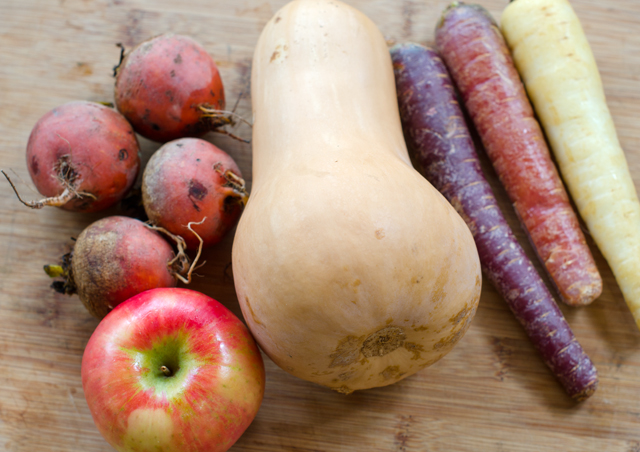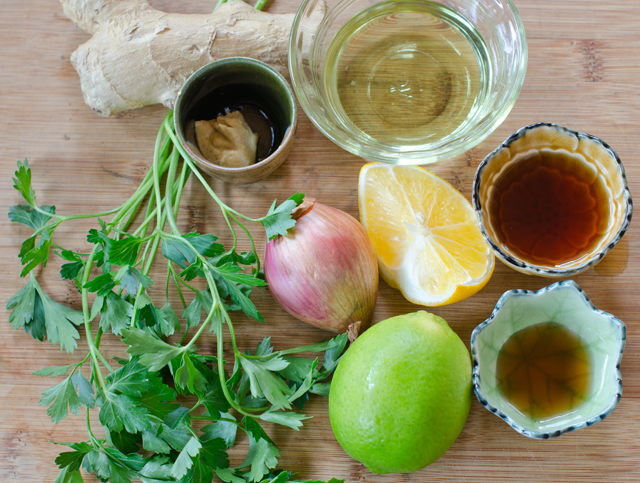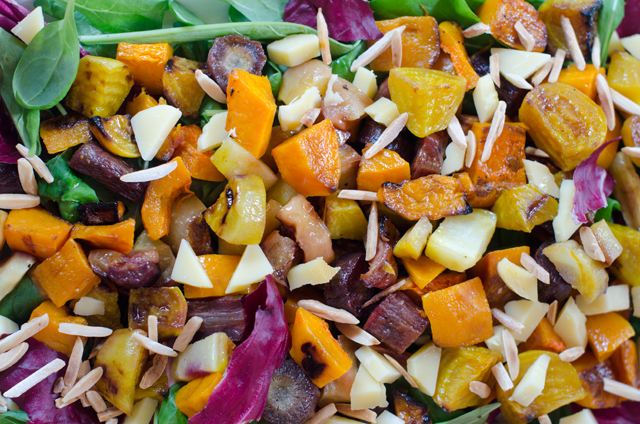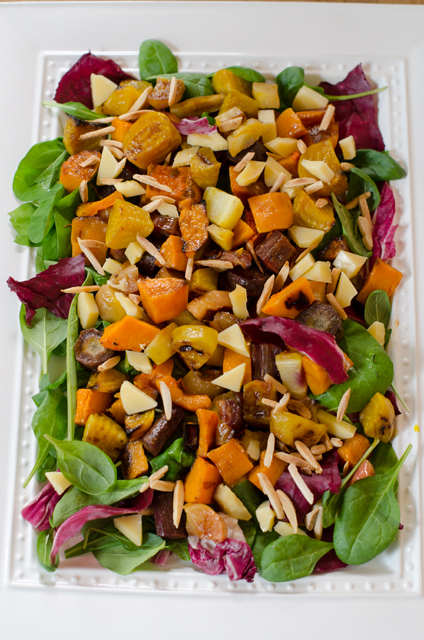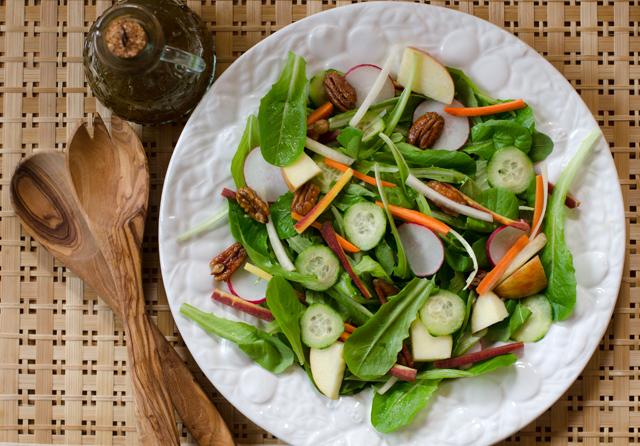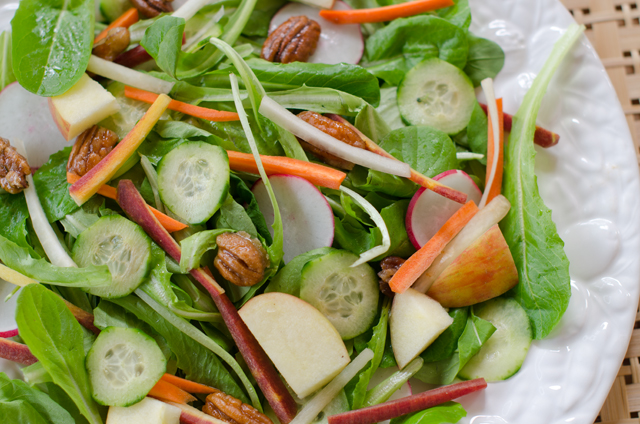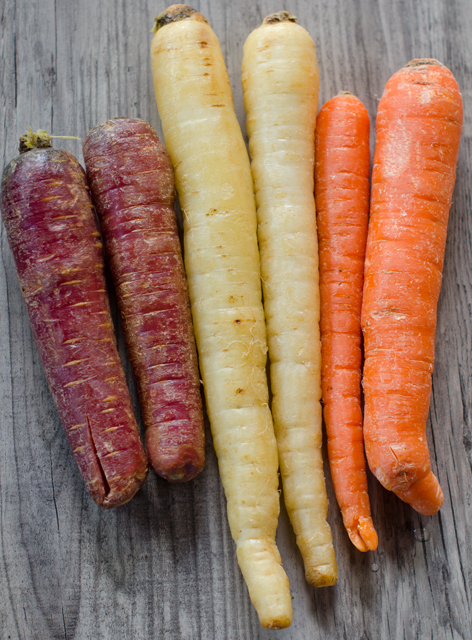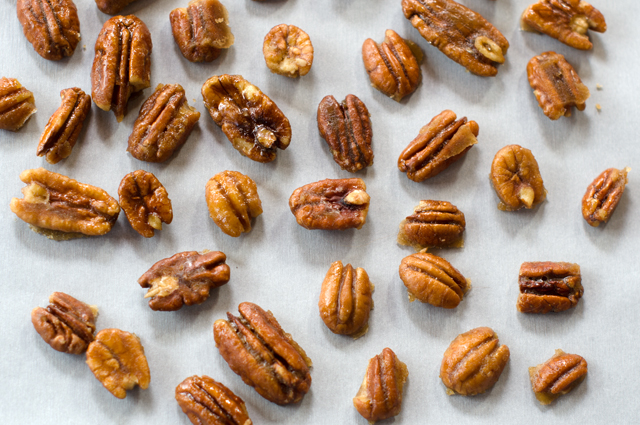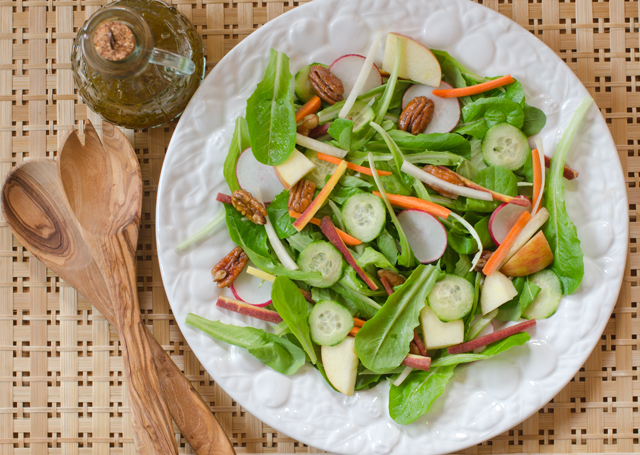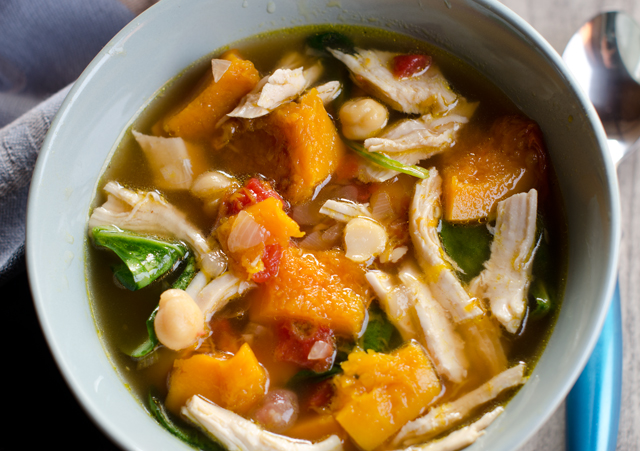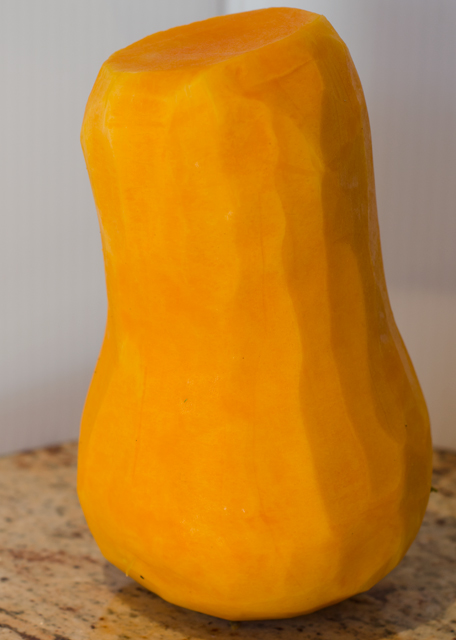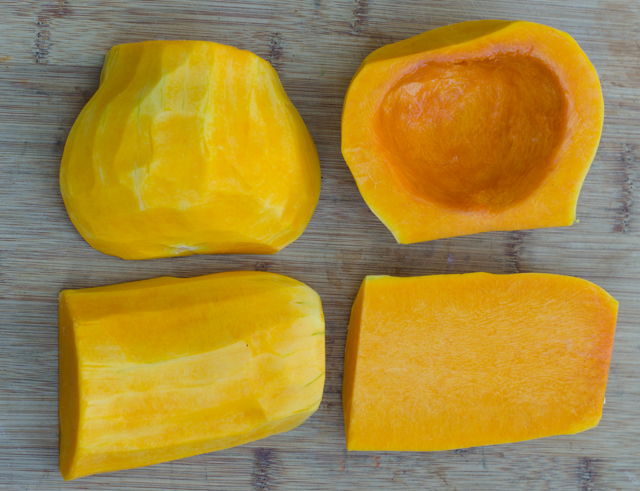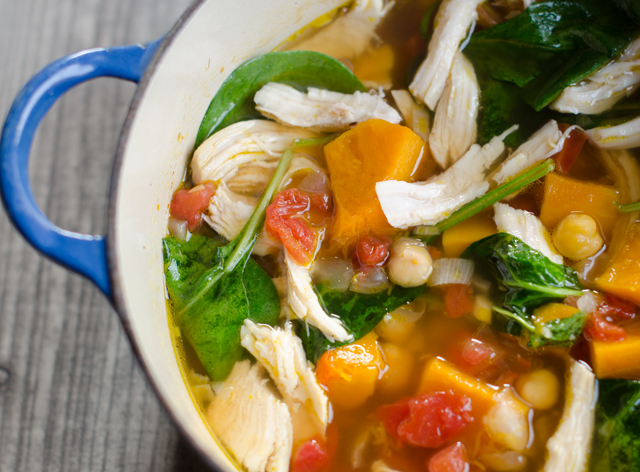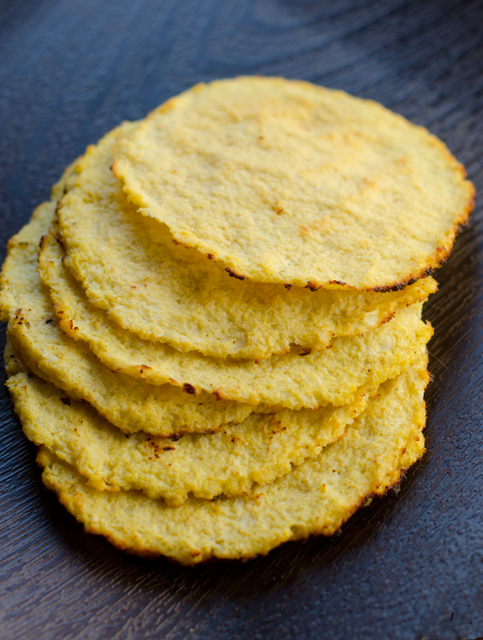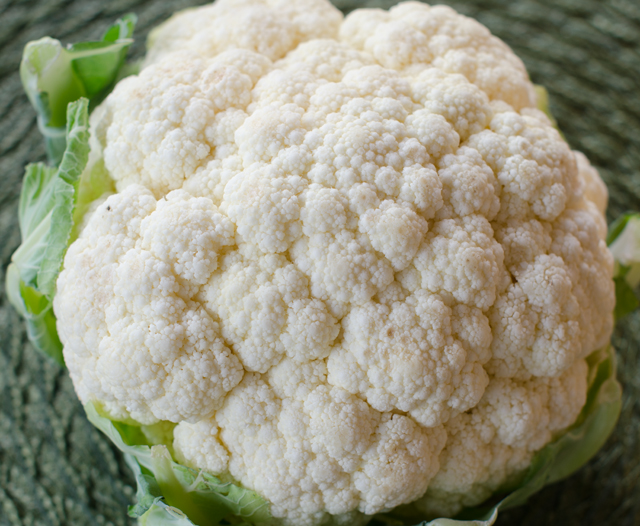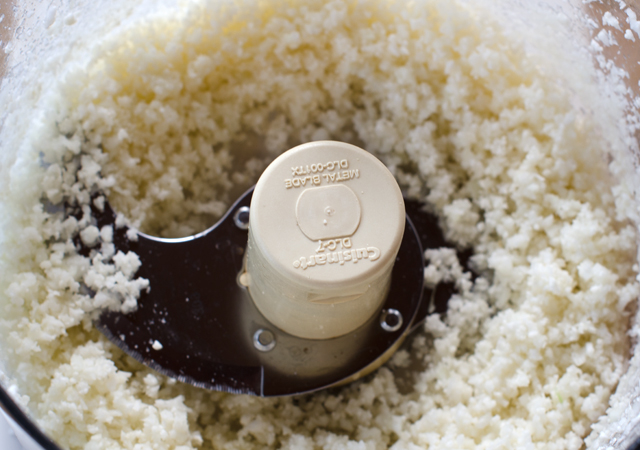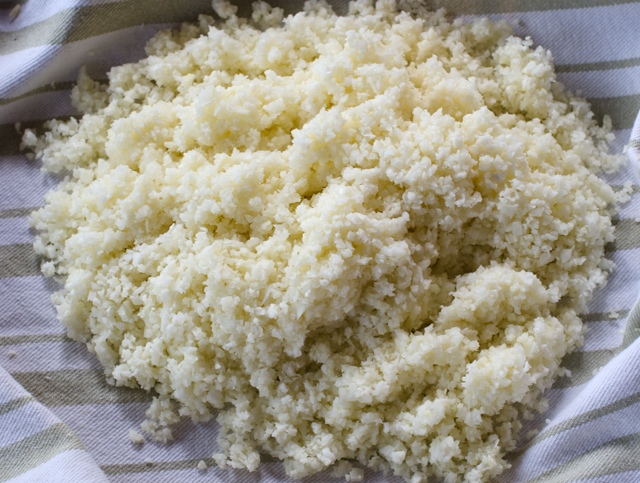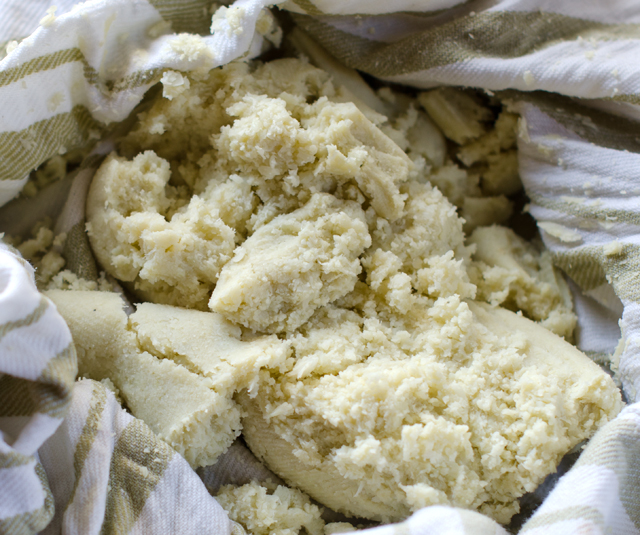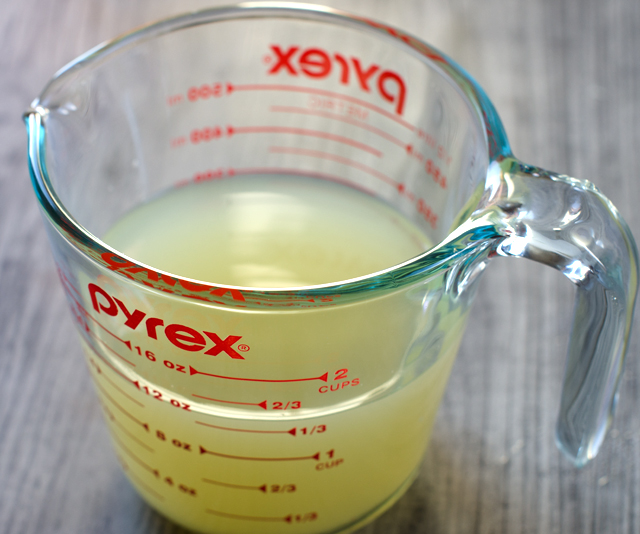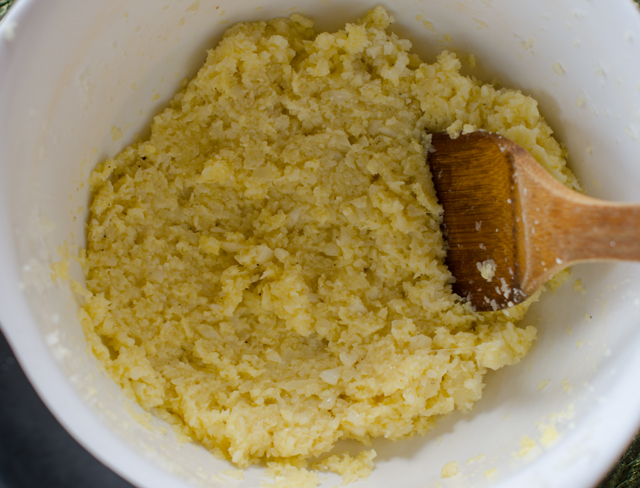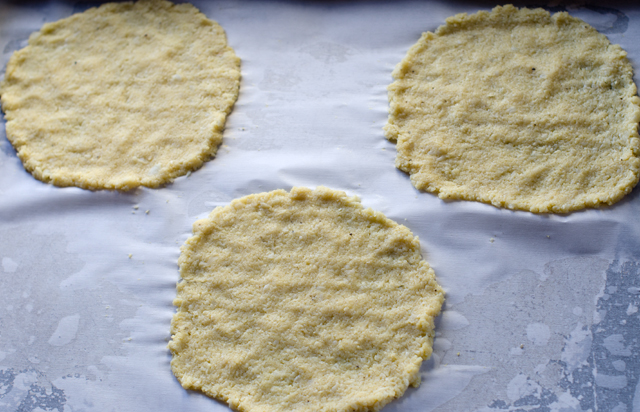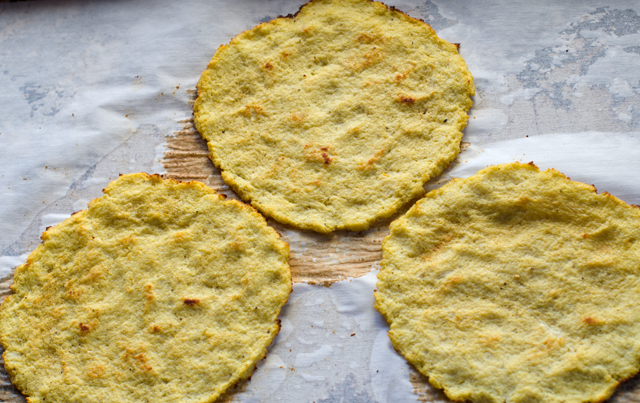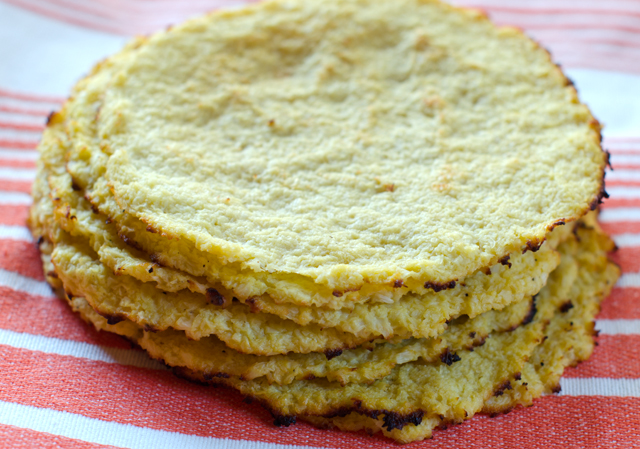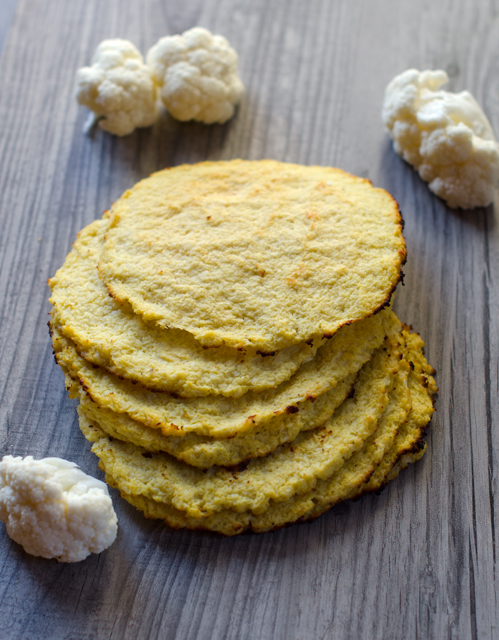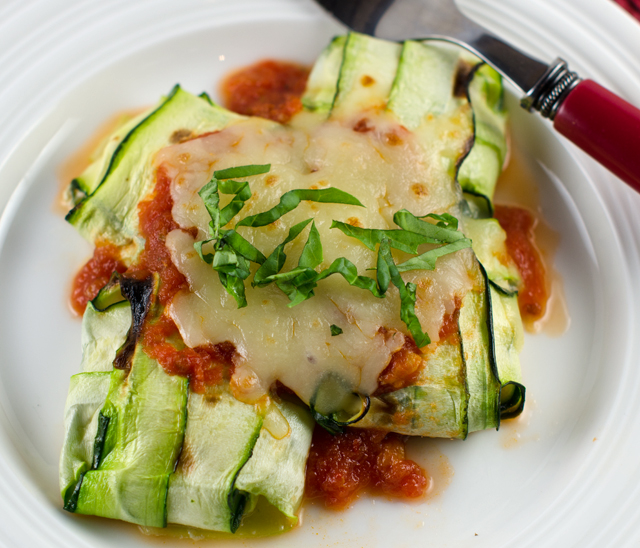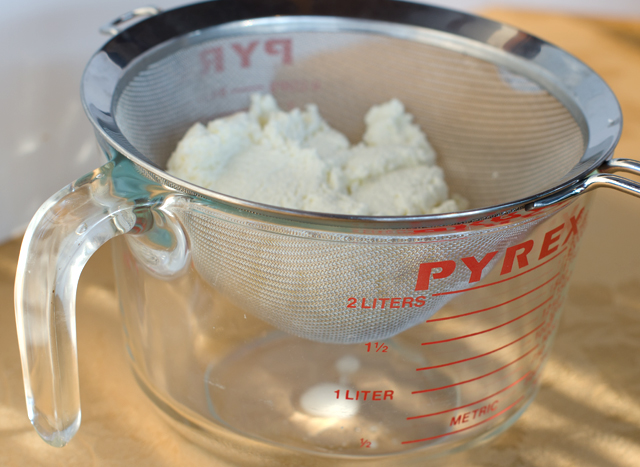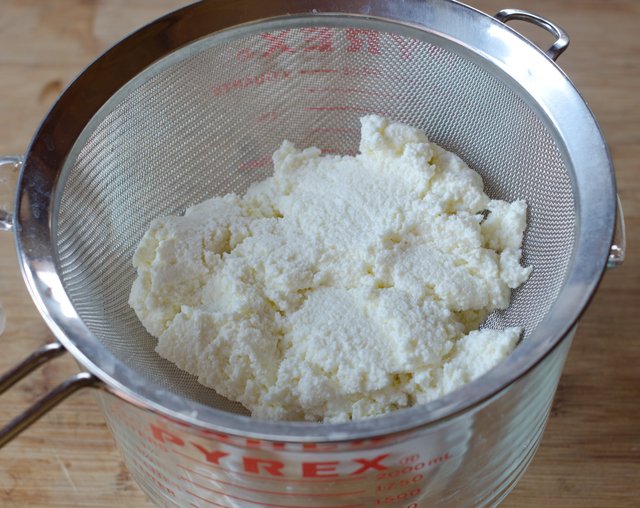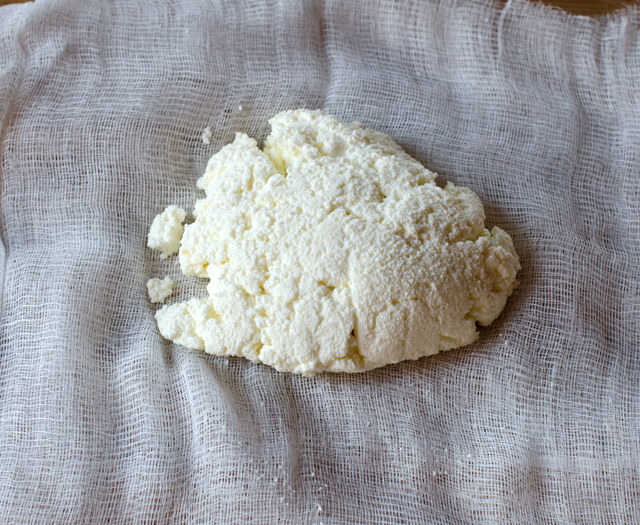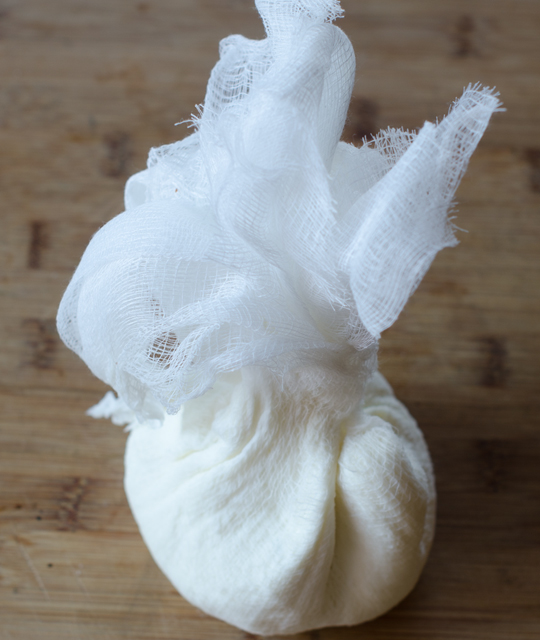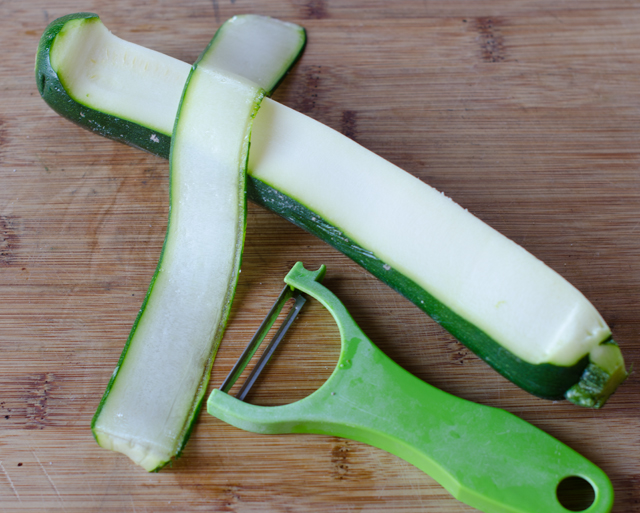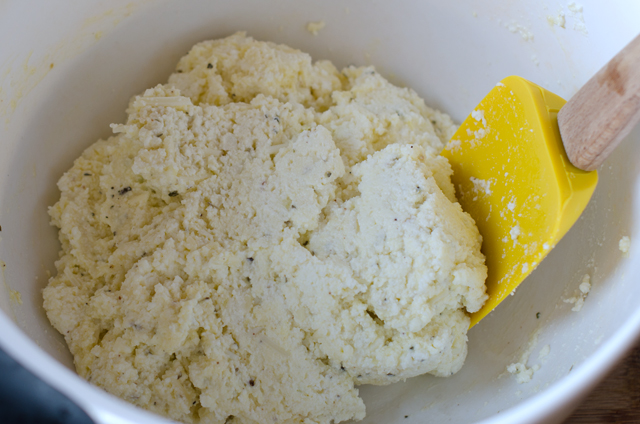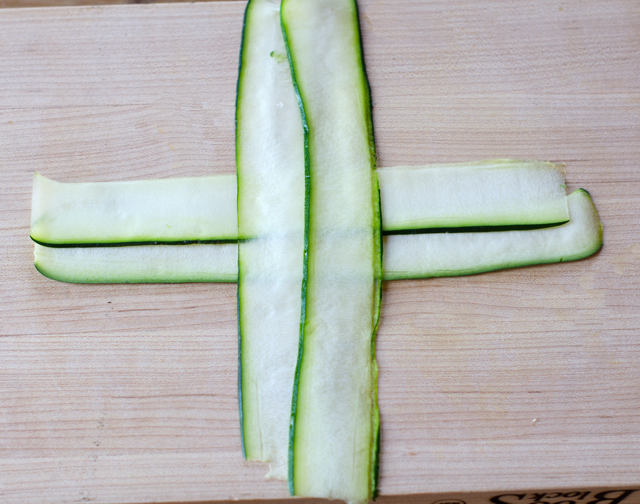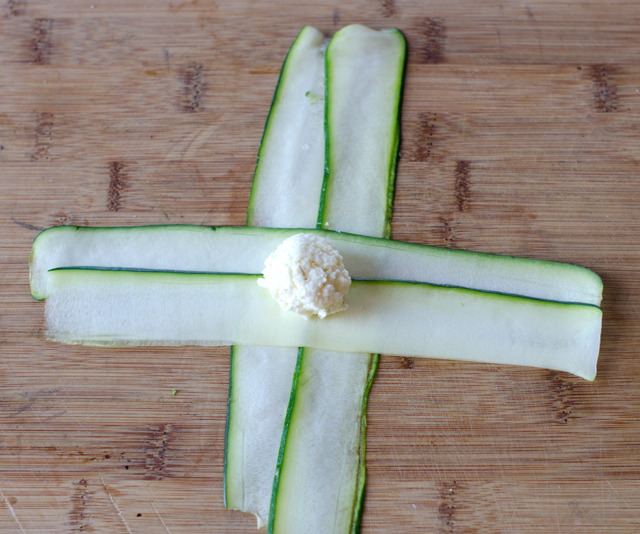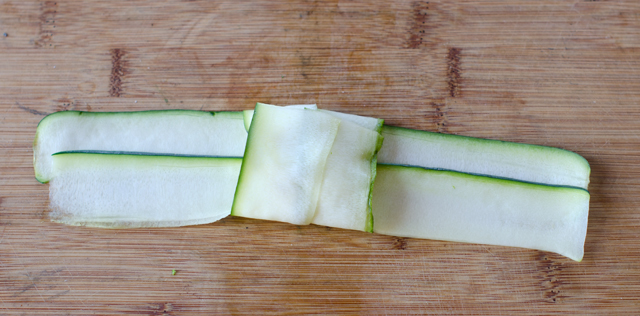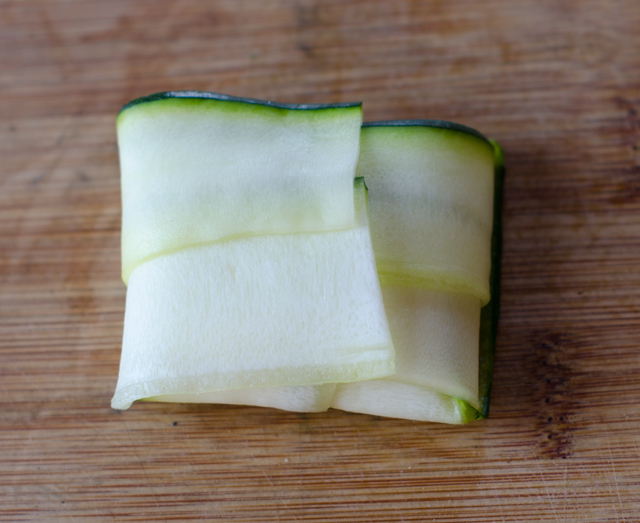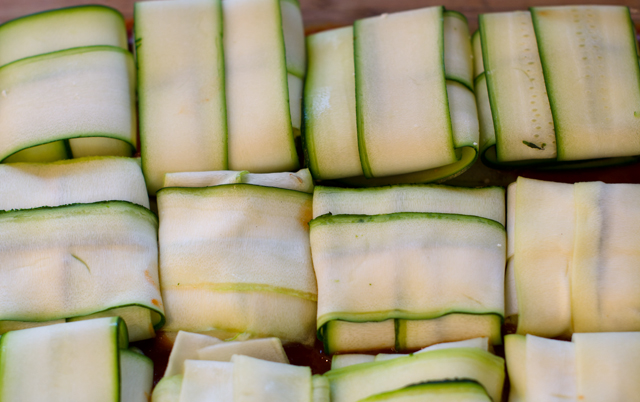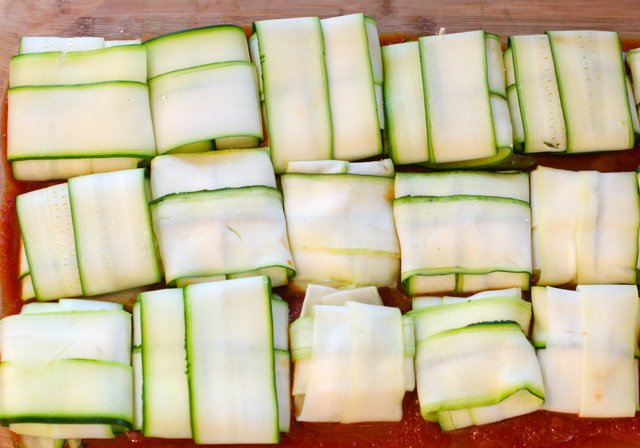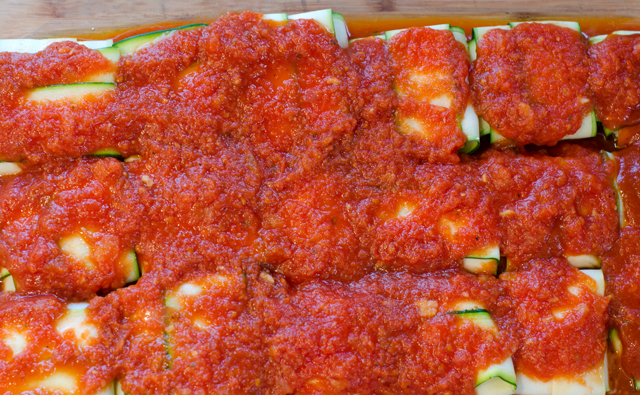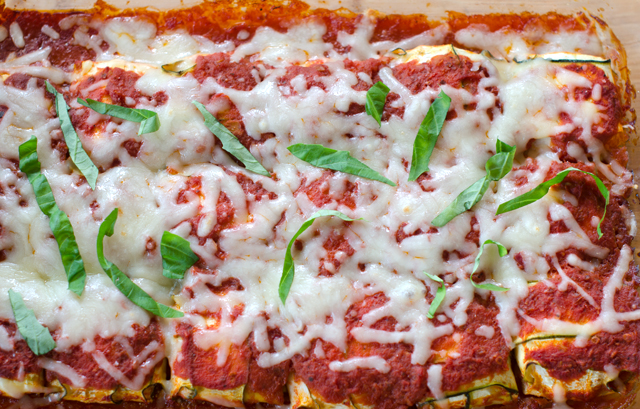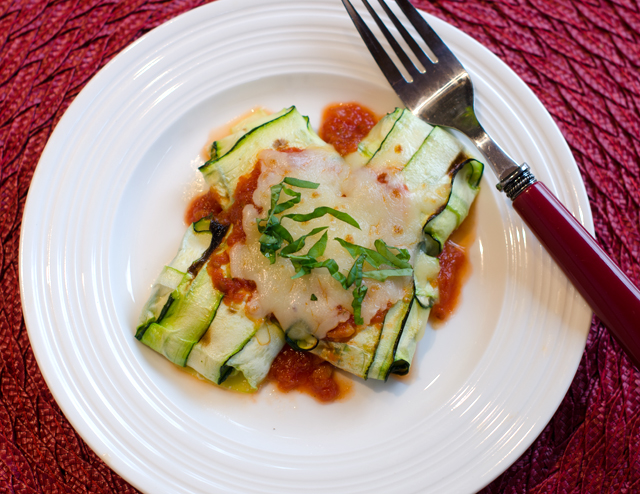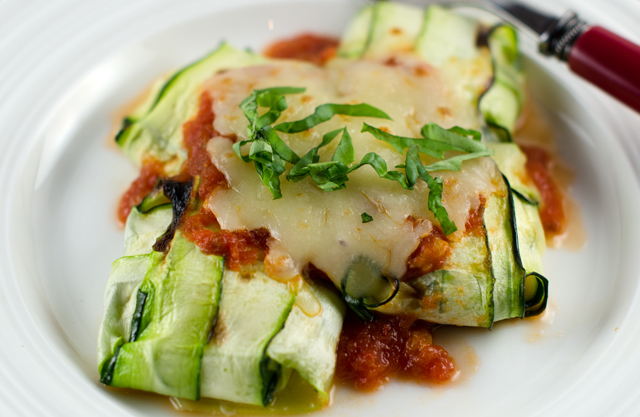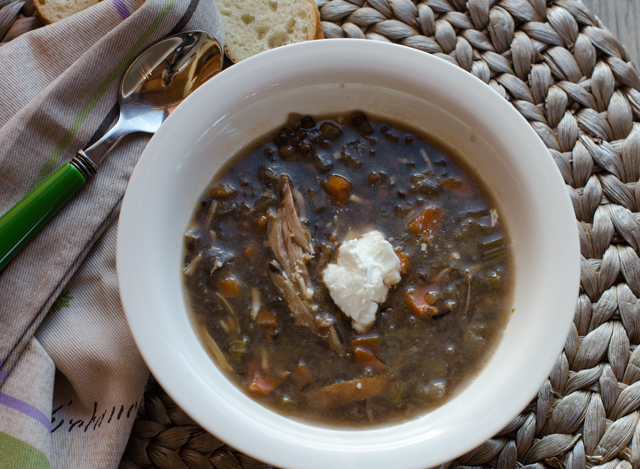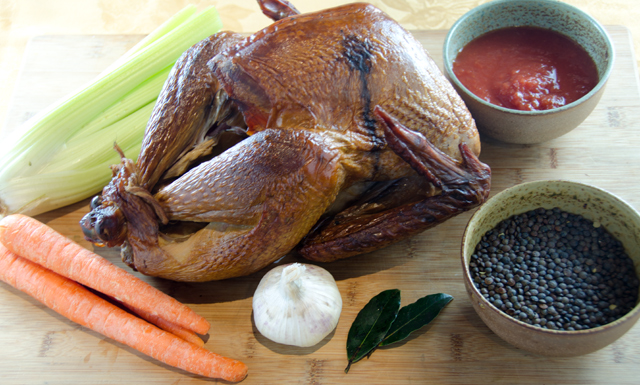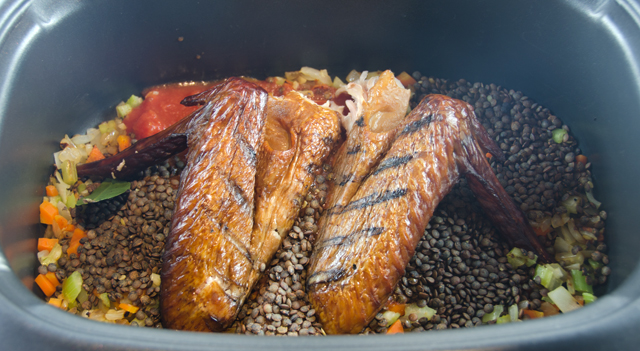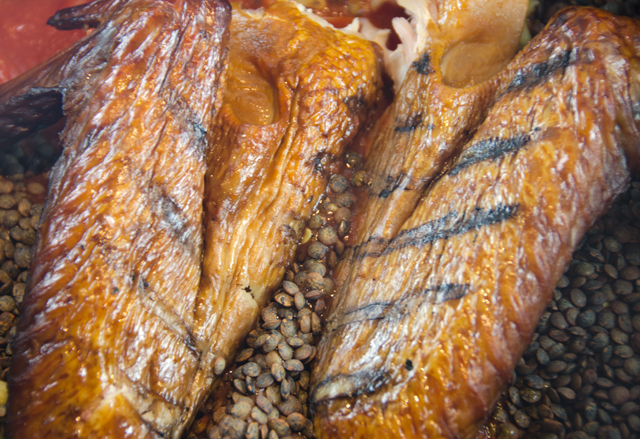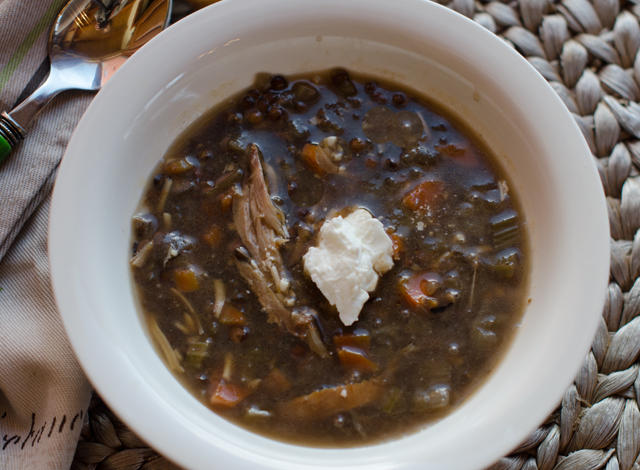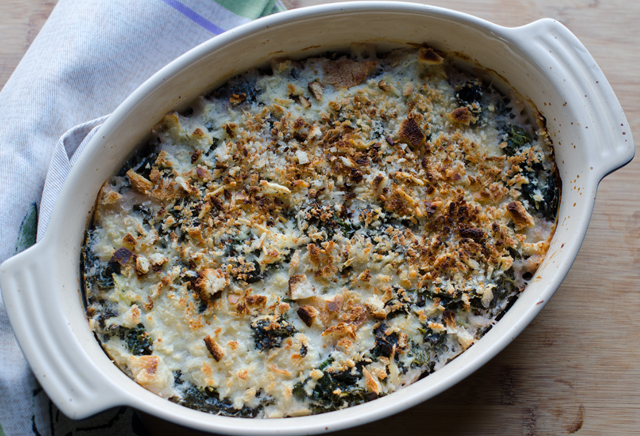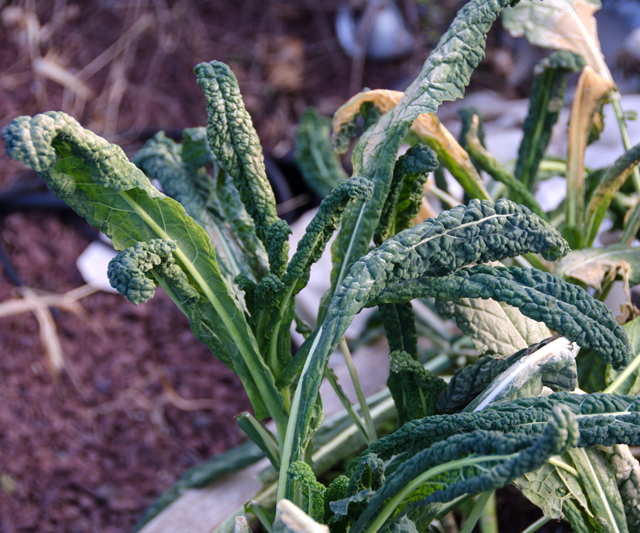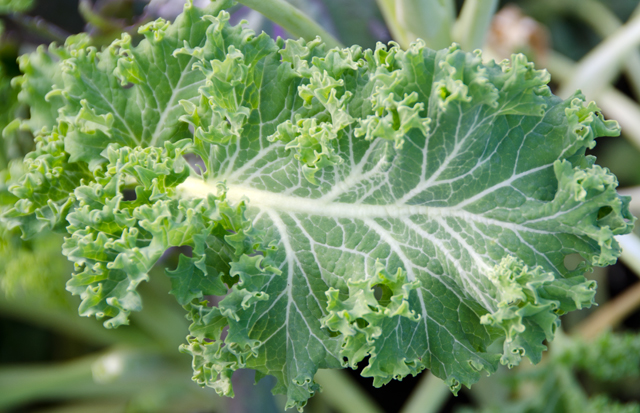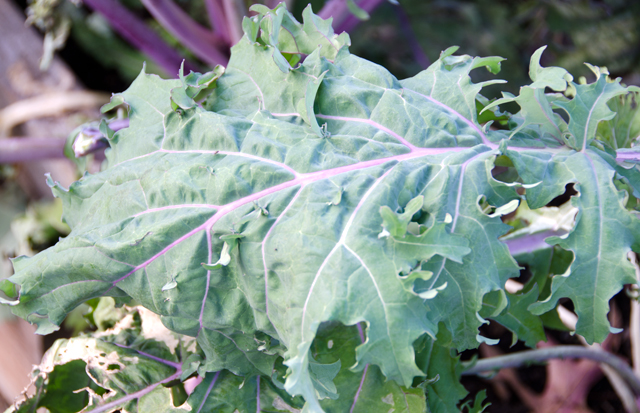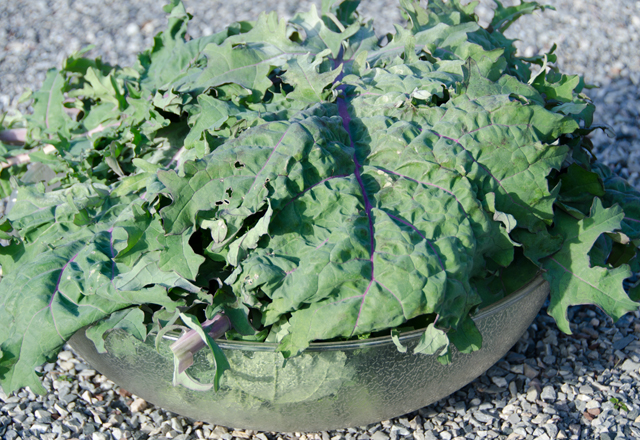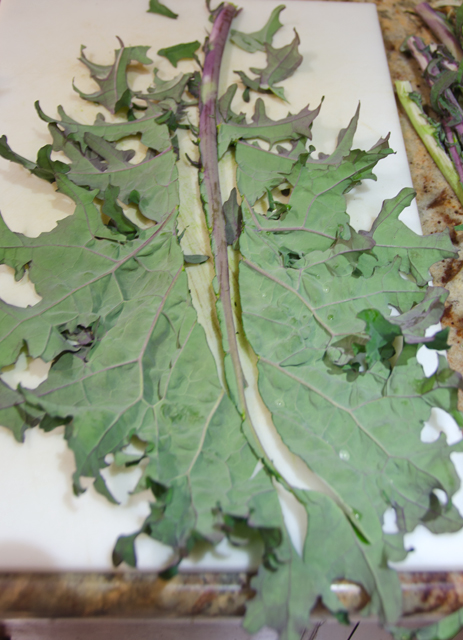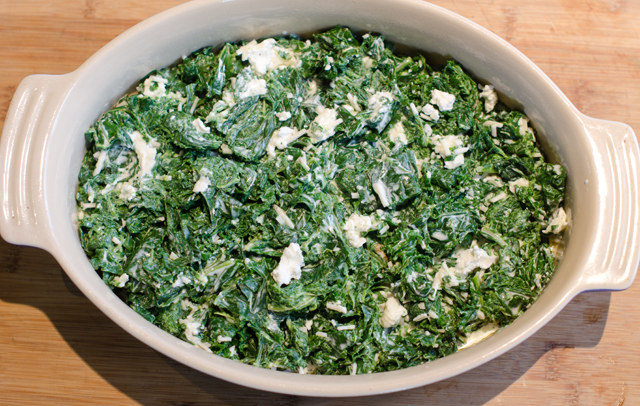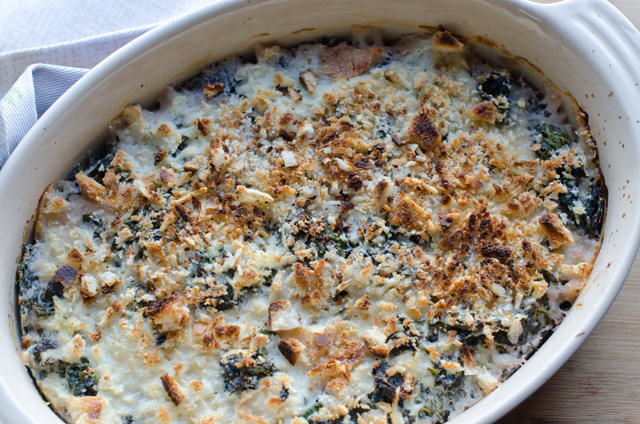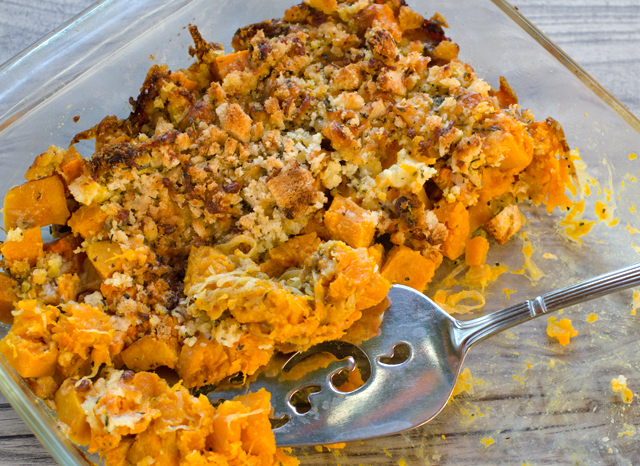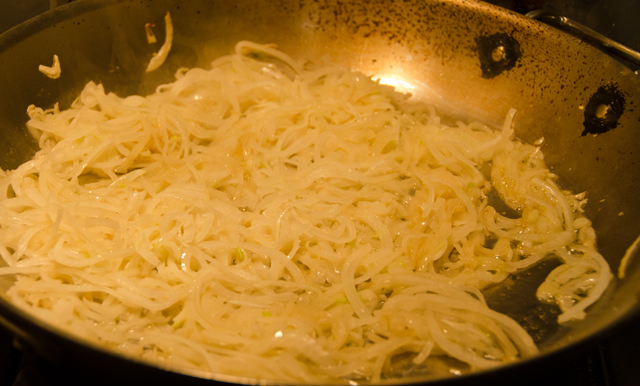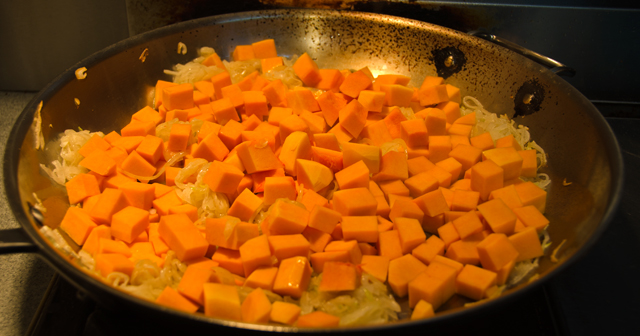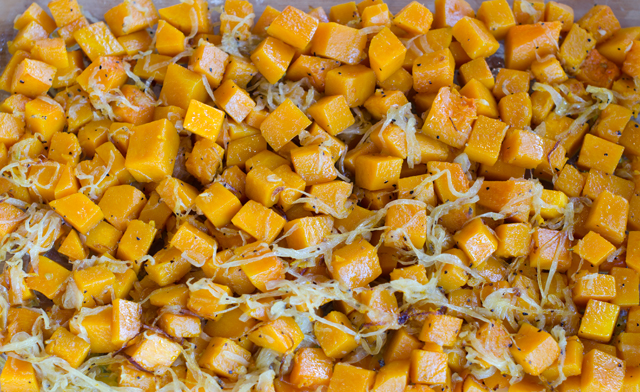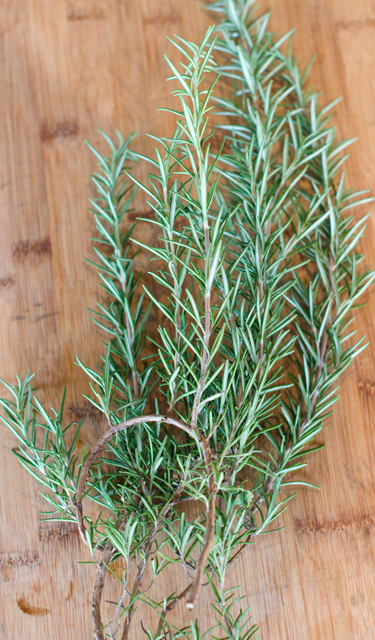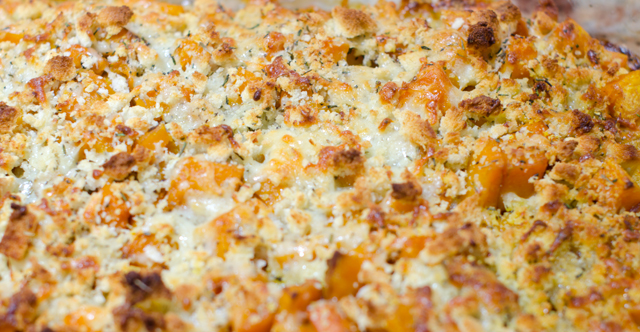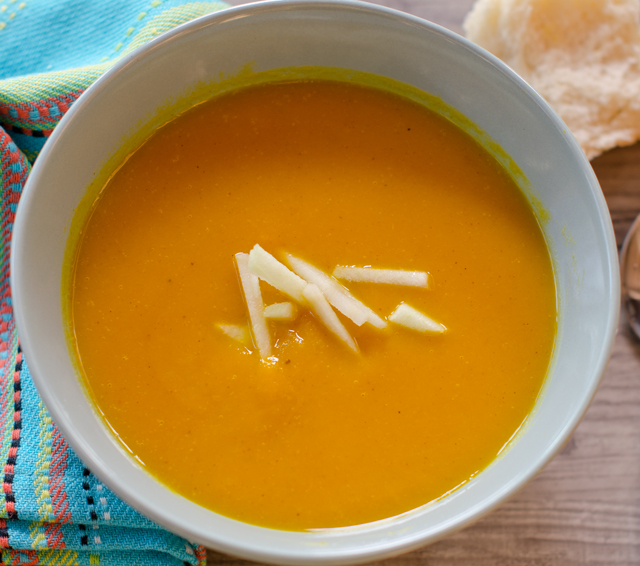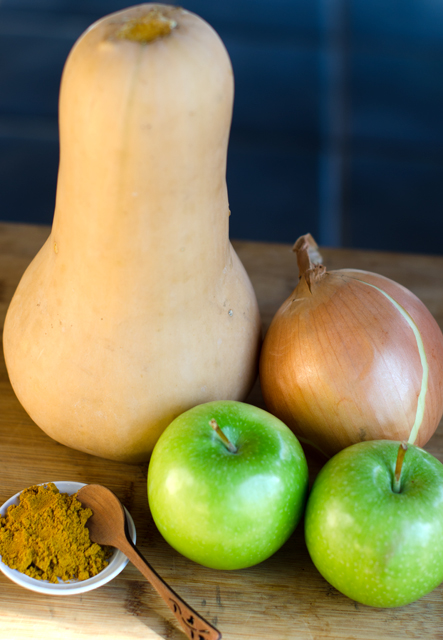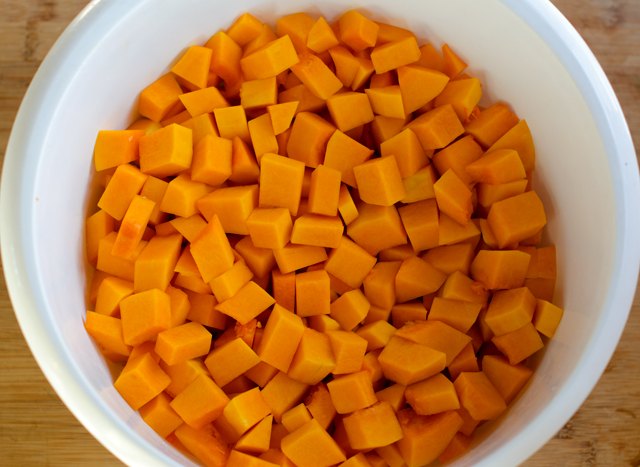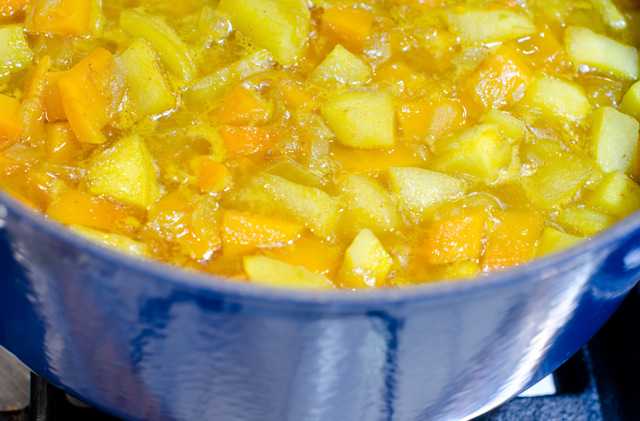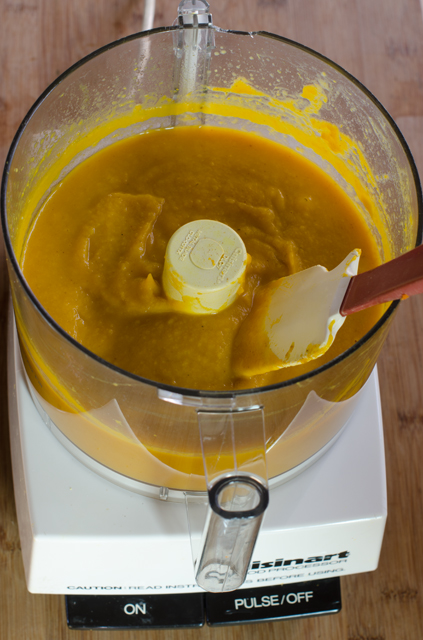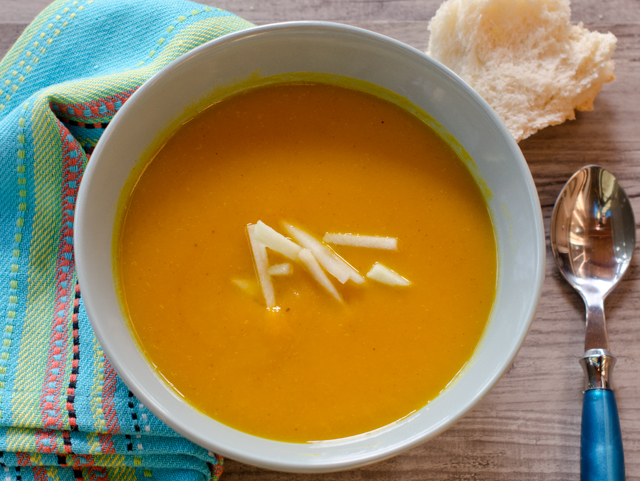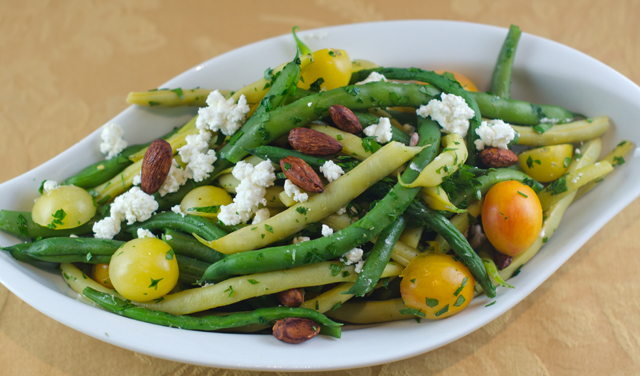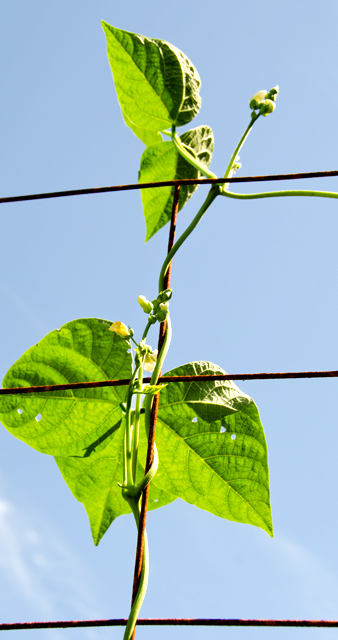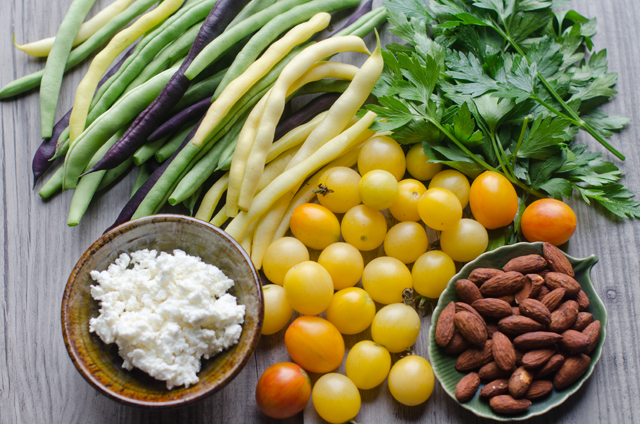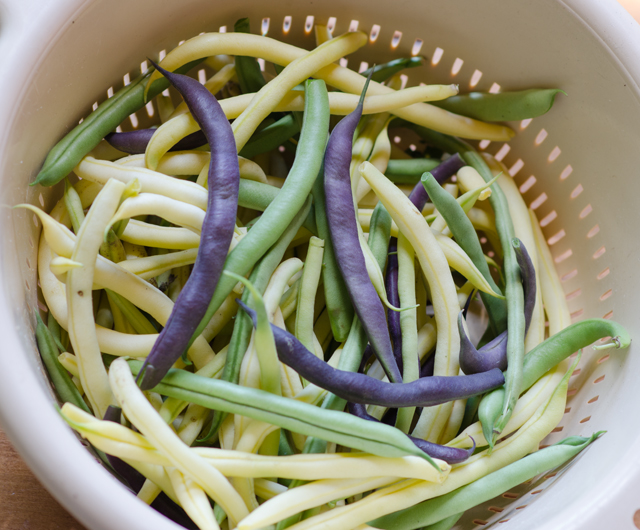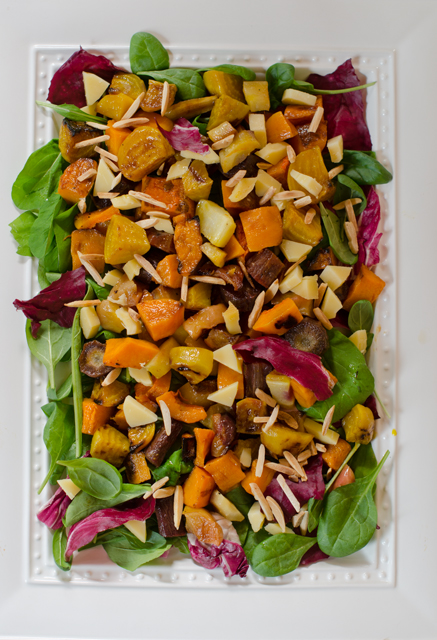 With three nor’easters bringing snow, rain and high winds over the last week or so and two more anticipated this week, it’s hard to believe that the first day of spring is tomorrow. We are months away from the heart of the summer produce season but that doesn’t mean you can’t enjoy a delicious fresh salad. Using this formula for a roasted vegetable salad from Fine Cooking magazine is just what you need to stimulate your cooking creativity and beat the winter blahs.
With three nor’easters bringing snow, rain and high winds over the last week or so and two more anticipated this week, it’s hard to believe that the first day of spring is tomorrow. We are months away from the heart of the summer produce season but that doesn’t mean you can’t enjoy a delicious fresh salad. Using this formula for a roasted vegetable salad from Fine Cooking magazine is just what you need to stimulate your cooking creativity and beat the winter blahs.
Hearty greens like spinach, arugula and radicchio form the base of this salad. Other choices could include baby greens like kale, collards and chard. I must emphasize baby (immature), because the mature greens are quite toothsome and should be used in recipes where they are cooked. This is a good time to experiment with bitter greens like escarole, endive and radicchio. They contrast nicely with sweetness of the roasted vegetables.
Roasted vegetables give the salad substance and a lot of deep rich flavor. Root vegetables, potatoes and winter squash are great for roasting, you can even add apple and pear wedges. Cut the vegetables into fairly even sized pieces so they cook evenly. Toss the vegetables with olive oil and some kosher salt. If you are using red beets, toss and roast on a separate pan. Otherwise the beets will discolor the other vegetables on the baking sheet. Roast about 20 minutes, tossing veggies halfway and rotating the baking sheet. The amount of vegetables may seem like a lot but roasting condenses them in size and concentrates their sweet flavor. I used golden beets, rainbow carrots, butternut squash and apple, all items I had in my pantry. So for me it was a “clean out your fridge” recipe.
The salad is accented with cheese and nuts that add contrasting flavors and textures. Aged Gouda brings a sharp, sweet flavor reminiscent of butterscotch and toasted slivered almonds add a wonderful aroma and crunch. An optional sprinkling of dried fruit, raisins, dried cranberries, figs give a nice touch as well.
A slightly tart white balsamic lime vinaigrette is a pleasing contrast to the sweetness of the roasted vegetables. I chose this recipe because Joe picked a large yellow, very fragrant lime from our Persian lime tree. This vinaigrette calls for an oil you may not be familiar with. High in polyunsaturated fats and vitamin E, grape seed oil is extracted from the seeds of grapes. Its flavor is neutral allowing the infused flavors of shallots and ginger to shine through.
White balsamic vinegar is made from the same variety of white grapes as dark balsamic . While the dark balsamic is simmered for hours and aged in barrels for years, white balsamic is slow cooked to avoid caramelization and is not aged. White balsamic vinegar is a good choice when you don’t want to darken the appearance of your final dish.
Toss the greens in a large bowl with a drizzle of the warm vinaigrette. Distribute the greens on two plates. Next, gently toss the roasted vegetables with some of the remaining vinaigrette. Distribute the vegetables over the plates, along with the nuts, cheese and optional fruit.
This would be a nice vegetarian lunch or dinner. Add chicken or thinly sliced flank steak if you need to include meat. The formula gives you the chance to be creative and make your own unique and delicious salad.
Butternut Squash, Golden Beet, Carrot and Apple Salad
Serves 2
Ingredients for the roasted vegetables
- 6-7 c mixed vegetables and fruit, I used butternut squash, rainbow carrots, golden beets and apple, trimmed and peeled.
- 2 T extra virgin olive oil
- Kosher salt
Directions for the roasted vegetables
- Position oven rack in the center and preheat oven to 450°F.
- Trim vegetables into 1-inch dice or wedges.
- In a large bowl, combine the vegetables and fruits with the oil and 1 t salt.
- Toss well and transfer to a large rimmed heavy-duty baking sheet.
- Spread the vegetables evenly on the baking sheet.
- Roast. flipping the vegetables halfway through the baking time and rotating the baking sheet.
- Cook until the vegetables are browned and tender, 20-25 minutes.
- Let cool and transfer to a large bowl.
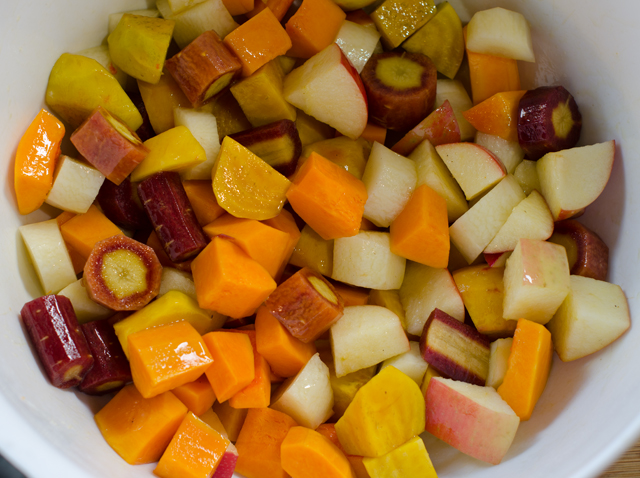
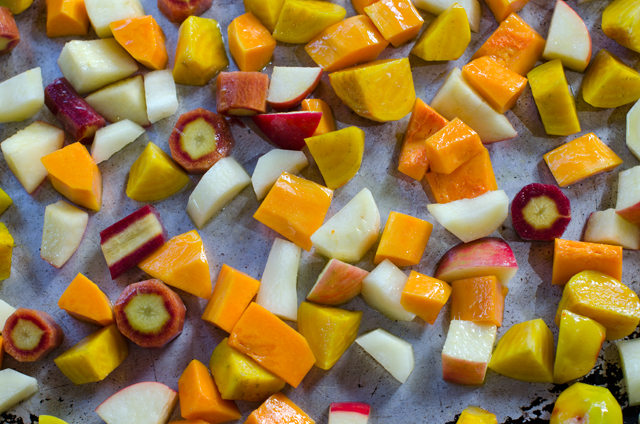
Ingredients for the white balsamic lime vinaigrette
- ¼ c grape seed oil
- 1/3 c thinly sliced shallots
- kosher salt
- 1 t chopped fresh ginger
- 2 T white balsamic vinegar
- 1 T maple syrup or honey
- 1 T fresh lime juice (more to taste)
- 1 t grated lime zest
- 1 t fine minced parsley
- 1 t Dijon mustard
- Freshly ground black pepper
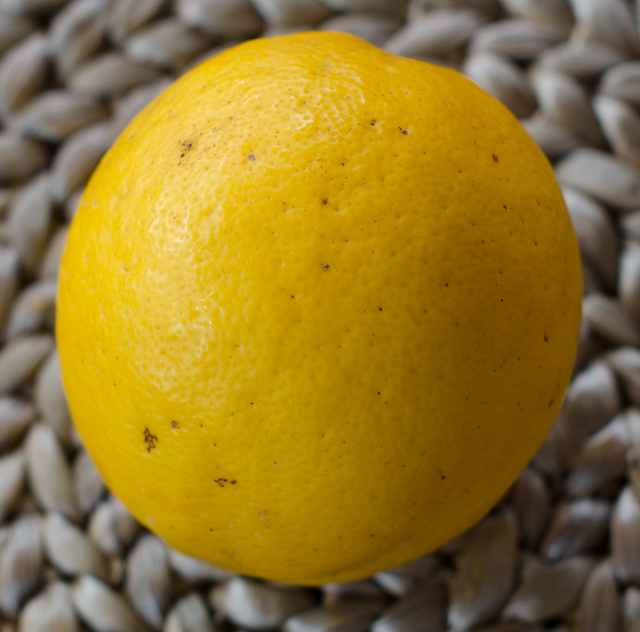
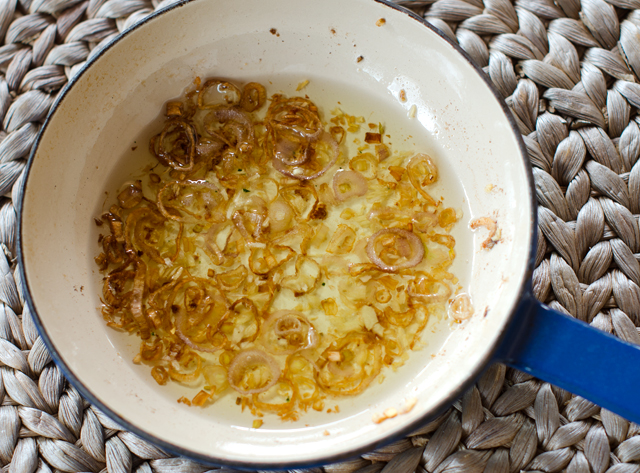
Directions for the white balsamic lime vinaigrette
- Heat the oil in an 8-inch skillet, over medium heat. Add the shallots and a pinch of salt and cook for 2-4 minutes, shallots should be softened and slightly browned.
- Add chopped ginger and cook until fragrant until softened and fragrant, 15 seconds. Take infused oil off the heat and let cool for about 5 minutes.
- While the oil is cooling, to a heat proof metal bowl add the vinegar, maple syrup, juice, zest, mustard, ¼ t salt and a few grinds of pepper.
- Whisk the warm oil into the vinegar mixture until emulsified. Taste vinaigrette and season to taste with additional salt, pepper or citrus juice.
Ingredients for assembling the salad
- 5-6 cups of sturdy greens, torn into bite sized pieces if needed
- Kosher salt
- Roasted vegetables from step one
- ¼ c toasted slivered almonds
- ½ c cubed aged Gouda
Directions for assembling the salad
- In a large bowl, lightly salt greens and toss with a drizzle of the warm vinaigrette. Taste a green and add a little more dressing if necessary. Arrange the greens on a platter or two plates.
- Season the vegetables with a pinch of salt and dress them lightly with 1-2 T of the remaining vinaigrette.
- Spread the vegetables evenly over the greens, then top with the almonds and Gouda. Serve immediately, passing the remaining dressing at the table.
